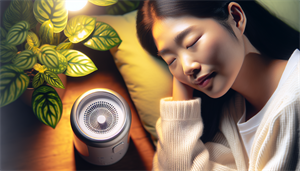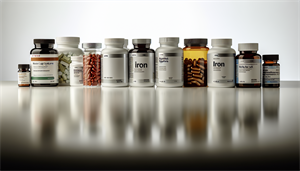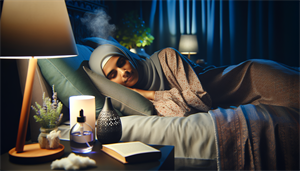Welcome to an enlightening journey into the intricate world of sleep disorders. We invite you to explore the significant connection between sleep apnea and Restless Leg Syndrome (RLS), and the profound impact these conditions can have on your sleep quality and overall health, if left unchecked. Ready to embark on this enlightening voyage? Let’s dive in!
Key Takeaways
-
Sleep Apnea and Restless Leg Syndrome (RLS) are linked with a substantial increase in insomnia when comorbid, and treatments such as CPAP for Sleep Apnea can improve RLS symptoms.
-
Diagnosing Sleep Apnea typically involves a sleep study, while RLS diagnosis is based on medical history, symptom description, and sometimes blood tests, with treatment for each affecting the management of the other.
-
Lifestyle modifications such as improving sleep hygiene, exercising, maintaining a balanced diet, and joining support groups can be important in managing both Sleep Apnea and RLS effectively.
The Connection Between Sleep Apnea and Restless Leg Syndrome

Sleep apnea and Restless Leg Syndrome (RLS) are more than just bedfellows. Research indicates that approximately 24.4% of patients with Obstructive Sleep Apnea (OSA) also battle with RLS, making it a case of comorbid RLS. This comorbid occurrence can significantly disrupt sleep and increase instances of insomnia, compared to individuals with OSA alone. The good news is that treating sleep-related breathing disorders like OSA has shown considerable improvement in RLS symptoms, especially with continuous positive airway pressure (CPAP) therapy.
Managing RLS in OSA patients often involves assessing for iron deficiency and administering oral iron supplements if necessary. For those without iron deficiency, treatment may include the use of medications such as dopamine agonists. Thus, the link between OSA and RLS underscores the importance of comprehensive treatment strategies to alleviate both conditions for improved sleep quality and overall health.
Symptoms of Sleep Apnea and RLS
Significant disruptions in sleep patterns and daily life are common symptoms shared by sleep apnea and unsuspected restless legs syndrome rls. Some common symptoms include:
-
Difficulty initiating sleep
-
Frequent awakenings during the night
-
Excessive daytime sleepiness
-
Uncontrollable urge to move the legs, often due to an uncomfortable sensation
-
Urge to move the legs usually occurs during the evening or nighttime when in a seated or lying position
-
Movement provides temporary relief from discomfort
These symptoms can be a real sleep disruptor for individuals with sleep apnea or RLS.
Decreased sleep efficiency coupled with these sleep disruptions can lead to substantial daytime sleepiness, potentially impairing daily functionalities. Imagine the frustration of seeking rest after a long day, only to be greeted by an incessant urge to move your legs or interrupted breathing patterns.
Tackling these symptoms is a vital move towards restoring peaceful nights and rejuvenating days.
Risk Factors for Both Conditions
There are specific risk factors that raise the chances of developing sleep apnea and RLS. Shared risk factors for these conditions include:
-
Obesity
-
Family history
-
Specific medical conditions such as type 2 diabetes, congestive heart failure, high blood pressure, Parkinson’s disease, and chronic obstructive pulmonary disease.
Obesity, for instance, is associated with a higher probability of developing both sleep apnea and RLS, primarily due to factors like heightened fat accumulation, which can impact breathing during sleep and overall body health. Family history also plays a crucial role, as there is often a genetic predisposition for these conditions, including sleep apnea syndrome and periodic limb movement disorder.
Specific medical conditions that can increase the likelihood of developing both sleep apnea and RLS include:
-
Type 2 diabetes
-
Congestive heart failure
-
High blood pressure
-
Parkinson’s disease
-
Sleep-disordered breathing such as obstructive sleep apnea
Awareness of these risk factors can guide preventive actions and facilitate early intervention.
Diagnosing Sleep Apnea and Restless Leg Syndrome

Diagnosis is the first step towards an effective treatment plan for sleep apnea and RLS. A diagnosis of sleep apnea is usually made through a sleep study, including a polysomnogram (PSG) that records brain waves and tracks various physiological functions like breathing patterns, oxygen levels, and heart rate.
In contrast, RLS diagnosis does not typically require a sleep study, but involves:
-
Assessing medical history
-
Describing symptoms
-
Conducting physical and neurological examinations
-
Performing blood tests.
The early detection and diagnosis of sleep apnea and RLS can be pivotal in preventing potential complications such as cardiovascular disease, depression, and cognitive impairment. Grasping the diagnostic process can help you anticipate what’s ahead and formulate pertinent questions for your healthcare provider.
Sleep Studies and Assessments
Sleep studies and assessments are essential instruments in the diagnosis of sleep apnea. These procedures, such as polysomnography, record:
-
Brain waves
-
Breathing patterns
-
Oxygen levels
-
Heart rate during sleep
One significant metric collected during polysomnography is the Apnea-Hypopnea Index (AHI), which measures the severity of sleep apnea by documenting the frequency of apnea and hypopnea events per hour of sleep.
For instance, an AHI score of 22.1 events/h indicates moderate sleep apnea, while the mean AHI in OSA patients can be higher, around 34.4 events/h. A patient’s CPAP requirement during polysomnography, for example, 14 mmH2O, indicates the necessary level of air pressure to maintain open airways during sleep, which is associated with the severity of the diagnosed sleep apnea. These assessments provide valuable insights into the severity of sleep apnea, guiding appropriate treatment options.
Specialist Referrals
In certain instances, referrals to specialists may be required for accurate diagnosis and effective treatment of sleep apnea and RLS. Sleep specialists play a pivotal role in identifying and managing sleep disorders, utilizing techniques such as polysomnography to monitor brain waves and other physiological functions during sleep. Should you experience symptoms such as daytime fatigue, poor concentration, and increased irritability as a result of sleep apnea and RLS, a referral to a neurologist may be warranted, as these symptoms can significantly impact neurological well-being and alertness.
Patients who have difficulty tolerating CPAP treatment may be recommended for evaluation of alternative treatment modalities to manage their sleep apnea, such as other types of breathing devices, oral appliances, or different therapeutic strategies. The right specialist can help tailor treatment strategies to your unique needs, providing you with the best chance at improved sleep quality and health outcomes.
Treatment Strategies for Comorbid Sleep Apnea and Restless Leg Syndrome

Effectively managing both sleep apnea and RLS is fundamental to enhancing sleep quality and overall health. The initial step in managing these comorbid conditions may involve the use of upper airway stimulation for sleep apnea and dopaminergic agonists for RLS. The typical treatments for obstructive sleep apnea (OSA) are continuous positive airway pressure (CPAP) therapy and oral appliance therapy (OAT).
There’s good news for those experiencing OSA and severe RLS. Case reports indicate that patients who underwent UAS device implantation experienced near-resolution of their severe RLS symptoms. Thus, a comprehensive approach that addresses both conditions can enhance sleep quality and overall health.
Addressing Sleep Apnea
Various treatment options are available to manage sleep apnea, especially Obstructive Sleep Apnea (OSA). Some of the common sleep apnea treatment options include:
-
CPAP therapy: This involves wearing a mask over your nose and/or mouth while you sleep, supplying a constant and steady air pressure to keep the airways open.
-
Oral appliances: These are custom-made devices that help to reposition the jaw and tongue to keep the airways open.
-
Surgery: In some cases, surgery may be recommended to remove excess tissue or correct structural abnormalities in the airways.
-
Lifestyle changes: Making certain lifestyle changes such as losing weight, avoiding alcohol and sedatives, and sleeping on your side can also help to manage sleep apnea.
It is important to consult with a healthcare professional to determine the most appropriate treatment option for your specific condition.
An upper airway stimulation (UAS) device is another therapeutic option for individuals who are unable to tolerate CPAP. These devices have proven to be successful in addressing both REM and NREM sleep disordered breathing, diminishing the severity of sleep apnea, and resolving the challenges related to using a CPAP mask.
Thus, addressing sleep apnea can significantly improve sleep quality and minimize the impact of RLS.
Managing Restless Leg Syndrome

There are several strategies available to manage Restless Leg Syndrome (RLS) for restless legs syndrome patients. Pharmaceutical treatments such as Rotigotine (Neupro), pramipexole (Mirapex), and low potency opioids like codeine, hydrocodone, and tramadol have been effective in addressing RLS. However, it’s important to be mindful of potential side effects such as confusion, dizziness, faintness, drowsiness, nausea, and weakness.
Iron supplementation can also alleviate the restlessness and severity of symptoms associated with RLS, especially in individuals with iron deficiency, leading to significant relief from RLS symptoms. Addressing underlying conditions like iron-deficiency anemia may involve the use of medications and lifestyle modifications, further improving the management of RLS.
With the right strategies, managing RLS can yield better sleep quality, improved daily functioning, and a better quality of life.
Lifestyle Changes to Improve Sleep Quality

Significant contributions to the management of sleep apnea and RLS can be made through lifestyle changes. This includes improving sleep hygiene, incorporating regular exercise, and maintaining a balanced diet. Individuals experiencing sleep apnea and RLS are advised to consume foods high in vitamin C and iron to aid in iron absorption, and to refrain from consuming caffeine, alcohol, sugar, and salt, which can exacerbate symptoms.
Reducing caffeine and alcohol intake can have a beneficial effect on the symptoms of sleep apnea and RLS. Alcohol consumption has been linked to sleep apnea, therefore it is recommended to avoid it. Additionally, consuming alcohol and caffeine before bedtime may lead to decreased sleep quality and exacerbate symptoms of both sleep apnea and RLS.
Sleep Hygiene Tips
Adopting good sleep hygiene practices can markedly enhance sleep quality and reduce the symptoms of sleep apnea and RLS. This includes:
-
maintaining the appropriate temperature in the room
-
ensuring darkness
-
minimizing bothersome sounds
-
eliminating electronics from the bedroom.
The optimal temperature for sleep is approximately 65 degrees Fahrenheit. This temperature facilitates improved sleep quality and sustains uninterrupted sleep throughout the night.
Reducing screen time before bed can also have a significant impact on sleep quality, as it can increase sleep duration and reduce sleep latency, ultimately leading to a more restful night. These sleep hygiene tips, combined with proper treatment, can help you create a conducive sleep environment and improve your sleep quality significantly.
Exercise and Diet
A balanced diet combined with regular exercise is vital in the management of sleep apnea and RLS. Increased weight or obesity is associated with a higher risk of developing sleep apnea, and a high body mass index is correlated with restless legs syndrome. Exercise strategies for managing both conditions include progressive muscle relaxation, strength training, and aerobic activities like swimming, biking, jogging, or walking.
Dietary choices also play a substantial role. Dietary patterns associated with obesity exacerbate both conditions, whereas a diet rich in fruits, vegetables, and essential nutrients such as iron, folate, and magnesium can have a positive impact on RLS. It is recommended to consume foods high in vitamin C alongside iron-rich foods to improve iron absorption. Implementing these lifestyle adjustments can help manage weight, improve sleep quality, and reduce the severity of sleep apnea and RLS symptoms.
The Role of Support Networks
In addition to medical treatments and lifestyle changes, support networks - like support groups and open dialogue with healthcare providers - can play a significant role in managing sleep apnea and RLS. Support groups offer valuable education, emotional support, and the chance to connect with others experiencing similar conditions, thus assisting individuals in dealing with the difficulties associated with living with sleep apnea and RLS.
Effective communication with healthcare providers enhances adherence to therapy and offers support for self-care in individuals with sleep apnea and RLS. Open communication about symptoms, concerns, and treatment progress is essential for effective management of these conditions.
Finding a Support Group
Joining a support group can offer:
-
Emotional support
-
Practical advice
-
A sense of community
-
Educational resources
-
Opportunities to connect with others facing similar challenges
-
A sense of community and empathy
For sleep apnea patients grappling with sleep apnea and RLS, addressing the underlying sleep disorder with the help of sleep medicine is crucial.
When selecting a support group, it’s crucial to consider organizations that provide resources for sleep disorders, including patient support and advocacy organizations. For RLS, the RLS Foundation’s network of volunteer support group leaders is especially valuable for their expertise and compassion.
Online support groups like CPAP Talk, Brigham Health: MyApnea Forum, and Apnea Board also provide extensive support and resources for individuals with sleep apnea and RLS.
Communicating with Healthcare Providers
Effective communication with your healthcare provider can greatly enhance the management of sleep apnea and RLS. It’s vital to convey information about the medications and strategies that impact your experience with RLS, along with the frequency, nature, and intensity of your symptoms.
For sleep apnea, effective communication may encompass discussions on weight loss and exercise, sleep position, and avoidance of alcohol and specific medications. When dealing with RLS, communication of symptoms, concerns, and treatment progress may involve conversations about home remedies such as massage, heat, and exercise, as well as lifestyle modifications and relaxation techniques before bedtime.
Open and honest communication with your healthcare provider can lead to more personalized and effective treatment strategies.
Summary
To sum up, understanding the connection between sleep apnea and Restless Leg Syndrome (RLS) is essential in managing these conditions effectively. From recognizing common symptoms and risk factors to exploring diagnostic procedures and treatment strategies, each step in this journey plays a crucial role in enhancing sleep quality and overall health. Remember, lifestyle modifications, along with medical treatments, can significantly alleviate symptoms and improve sleep quality. Moreover, support networks can offer invaluable emotional support, educational resources, and a sense of community. May your journey towards better sleep and health be a fruitful one!
Frequently Asked Questions
Does sleep apnea affect restless leg syndrome?
Yes, sleep apnea can affect restless leg syndrome, as RLS often persists even after positive airway pressure therapy for sleep apnea has been prescribed. This can be a reason for lower adherence to the therapy.
What deficiency causes restless legs?
Iron deficiency, which can lead to low levels of dopamine, is a common cause of restless legs syndrome (RLS). This deficiency can exacerbate RLS symptoms.
How do I stop restless leg syndrome while sleeping?
To stop restless leg syndrome while sleeping, try massaging your legs, taking a hot bath, applying a hot compress to your leg muscles, and engaging in activities that distract your mind, such as reading or watching television. Additionally, avoid or decrease alcohol, nicotine, and caffeine, and maintain a regular sleep pattern.
Symptoms of sleep apnea?
Some common symptoms of sleep apnea are daytime fatigue, loud snoring, and waking up with a dry mouth. It is important to consult a healthcare professional for proper diagnosis and treatment.
How are sleep apnea and RLS diagnosed?
Sleep apnea is diagnosed through a sleep study, which monitors breathing patterns, oxygen levels, and heart rate, while RLS diagnosis involves assessing medical history, symptoms, physical and neurological examinations, and blood tests.


